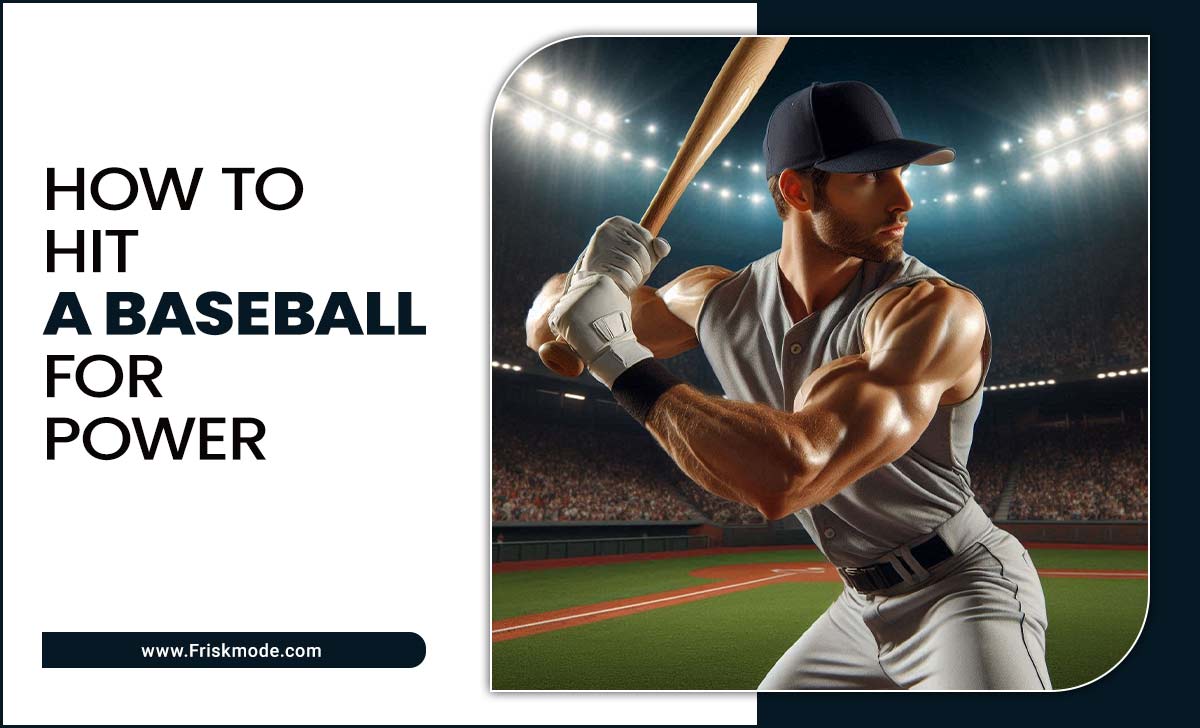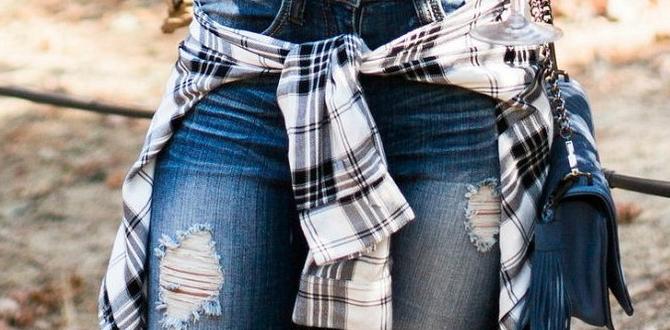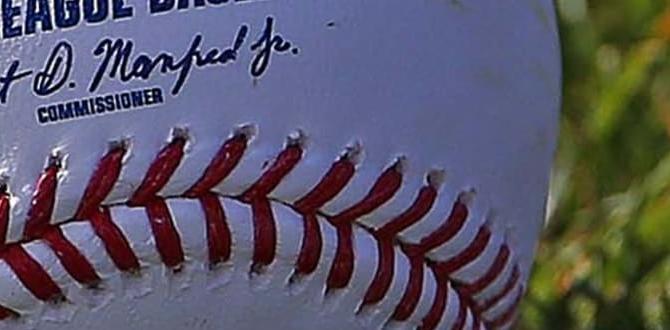Easton catchers shin guards are crucial protective equipment designed to safeguard a catcher’s lower legs from high-speed pitches, foul tips, and errant throws, allowing for confident play and minimizing injury risk.
Stepping behind the plate as a catcher is a big deal! You’re the field general, calling the shots and making the big plays. But let’s be honest, it also means facing some serious heat. Pitches fly in fast, foul tips can sting, and the pressure to be ready for anything is immense. All that action puts your legs in the line of fire. It’s easy to feel a little nervous about protecting yourself. But don’t worry! Having the right gear makes all the difference. We’re going to dive into one of the most important pieces of equipment for any catcher: Easton’s shin guards. We’ll show you why they’re a top choice for pros and how they can keep you safe so you can focus on playing your best game.
Why Catchers Need Top-Notch Shin Guards
Being a catcher is a demanding job. You’re constantly in a crouch, receiving pitches, blocking balls in the dirt, and throwing runners out. Your legs take a beating with every single play. This is why high-quality shin guards aren’t just an accessory; they are essential safety gear. Without proper protection, you’re leaving yourself vulnerable to a range of injuries, from painful bruises to more serious issues that could sideline you for weeks. Think of them as your first line of defense, absorbing impact and keeping your legs in good shape so you can play consistently and confidently throughout the season.
The forces involved in baseball are surprisingly powerful. A fastball can travel over 90 miles per hour, and even a foul tip that glances off the bat can carry significant momentum. These impacts, if they land directly on your shins or knees, can be incredibly painful and lead to significant issues. Professional catchers, who are in the thick of the action game after game, rely on advanced protection to withstand these constant impacts. Their gear is built to handle the rigors of high-level play, offering a blend of durability, impact absorption, and comfort.
Easton: A Leader in Baseball Equipment
When it comes to baseball gear, Easton is a name that resonates with players at every level. For decades, Easton has been at the forefront of innovation, consistently developing equipment that enhances performance and provides superior protection. From their renowned bats to their durable gloves and catcher’s gear, Easton has earned a reputation for quality and reliability. This commitment to excellence extends to their line of shin guards, where they blend cutting-edge technology with player feedback to create gear that truly performs.
Their approach involves meticulous research and development, often partnering with professional athletes to test and refine their designs. This ensures that Easton gear isn’t just theoretical; it’s proven in the toughest game situations. For catchers, this means knowing that when you step behind the plate wearing Easton, you’re equipped with gear that has been trusted by the best in the business. They understand the unique demands of the catcher position and strive to deliver solutions that meet those needs head-on.
Easton Catchers Shin Guards: Key Features for Protection
Easton’s shin guards are engineered with the catcher’s safety and performance in mind. They aren’t just about covering your legs; they’re about providing strategic defense against the specific threats faced by catchers. Understanding the key features will help you appreciate why they are considered essential pro gear:
Impact Absorption Technology
At the core of any effective shin guard is its ability to absorb and dissipate impact. Easton utilizes advanced padding materials designed to cushion blows from pitches and foul tips. These materials, often proprietary foams or composites, are strategically placed to cover the most vulnerable areas, including the shins, knees, and instep of the foot. This technology is crucial for preventing serious injuries and reducing fatigue from constant impacts.
Adjustable Fit and Strapping Systems
A well-fitting shin guard is crucial for both comfort and protection. If guards are too loose, they can shift, leaving gaps where impact can occur. If they’re too tight, they can restrict movement and cause discomfort. Easton shin guards typically feature adjustable straps, often made of durable elastic or Velcro, allowing catchers to customize the fit to their legs. Some models even offer different sizes or adjustable components to accommodate a wider range of leg shapes and sizes. This personalized fit ensures the guards stay securely in place, providing consistent protection play after play.
Durable Exterior Shell
The outer shell of the shin guard needs to be tough enough to withstand direct impacts and the general wear and tear of the game. Easton uses high-impact plastics and durable, abrasion-resistant materials for their shells. These shells are designed not only to protect against direct hits but also to slide effectively if a catcher needs to block a ball in the dirt, preventing digging or getting stuck. The combination of a sturdy exterior and shock-absorbing interior is what makes these guards so effective.
Knee Protection Integration
For catchers, knee protection is intrinsically linked to shin protection. Many high-quality shin guards, including those from Easton, feature integrated knee caps that offer comprehensive coverage. These knee caps are designed to protect the kneecap itself while also extending down to cover the upper shin. This all-in-one approach ensures that a critical joint is shielded from high-velocity impacts, a common concern for catchers who spend so much time in a deep squat.
Breathability and Comfort
While protection is the primary concern, comfort is vital for maintaining focus and performance. Catchers are often in hot, demanding conditions, and gear that traps heat can be a distraction. Easton incorporates features like ventilation channels or breathable linings into their shin guards to help manage moisture and heat. This attention to comfort ensures that players can wear the guards for an entire game without excessive discomfort, allowing them to concentrate on the game.
Top Easton Catcher Shin Guard Models (and What Makes Them Great)
Easton offers a range of shin guards, each designed with specific features and levels of protection in mind. While models can evolve, here’s a look at some types of Easton shin guards and what makes them stand out for players serious about their gear:
Easton’s Professional Series Shin Guards
These are often the flagship models, designed with input from professional players. They typically feature the most advanced impact technologies, highest quality materials, and ergonomic designs for maximum comfort and protection. You can expect:
- Multi-layer impact dispersion systems for superior shock absorption.
- Advanced ventilation for enhanced breathability.
- Lightweight yet incredibly durable construction.
- Articulated knee caps for enhanced mobility.
- Premium padding that molds to the leg for a custom feel.
Easton Youth/Intermediate Series Shin Guards
Designed for younger players or those stepping up to more competitive levels, these guards balance protection with a focus on fit and ease of use. They might offer:
- Robust ABS plastic shells for solid protection.
- Secure, easy-to-adjust strapping systems suitable for younger athletes.
- Comfortable, moisture-wicking liners.
- Good coverage of shins and knees without being overly bulky.
- Value for money, providing trustworthy protection for developing players.
Key Differences to Consider
When choosing between Easton models, consider these aspects:
| Feature | Professional Series | Youth/Intermediate Series |
|---|---|---|
| Primary User | Advanced, Professional, High-Level Amateur | Beginner, Youth, Intermediate, Developing Players |
| Impact Protection | Superior, multi-layer technologies | Solid, reliable single-layer or reinforced protection |
| Materials | Premium composites, advanced foams, lightweight alloys | Durable ABS plastics, comfortable padding |
| Weight | Generally lighter for agility | Slightly heavier, prioritizing durability |
| Price Point | Higher | More budget-friendly |
| Adjustability | Highly customizable straps, articulated components | Straps designed for ease of adjustment |
Ultimately, the best model for you depends on your level of play, budget, and specific needs. It’s always a good idea to check the latest offerings from Easton, as they continuously update their product lines with new technologies.
Getting the Right Fit: A Crucial Step
Even the best shin guards won’t work properly if they don’t fit correctly. A proper fit is non-negotiable for ensuring optimal protection and comfort. Here’s how to get it right:
- Measure Your Legs: Start by measuring the length from the bend of your knee to the top of your foot (where your shoe would start). Most shin guards have size guides based on these measurements. Look for length options like 15-inch, 17-inch, etc.
- Consider the Coverage Area: Shin guards should cover your entire shin bone and extend up to protect your kneecap. The top of the guard should sit just below your kneecap, and the bottom should reach your cleat or shoe.
- Try Them On (If Possible): The best way to know if a guard fits is to try it on. Stand up, crouch down, and simulate catcher movements. Do they pinch? Do they slide down? Is the knee pad staying in place?
- Check the Straps: Ensure the straps are easy to use and can be tightened securely without being so tight that they cut off circulation or create pressure points. They should hold the guard firmly against your leg.
- Minimal Gaps: Look for guards that conform well to your leg shape. There shouldn’t be large gaps between your leg and the guard, especially around the calf or knee, as these are potential weak points for impact.
Remember, a properly fitted shin guard will feel secure, allowing you to move freely without worrying about it shifting or coming loose during a play. If you’re a parent buying for a young player, ensure they understand how to adjust and check their fit regularly, as kids grow quickly.
The Importance of Maintenance
Just like any piece of baseball equipment, treating your Easton shin guards with care will help them last longer and perform better. Proper maintenance is simple but effective:
- Cleaning: After games and practices, wipe down the exterior of your shin guards with a damp cloth to remove dirt and mud. For the liners, most can be removed and gently hand-washed with mild soap and water. Always allow them to air dry completely before storing to prevent odor and mildew. Never put them in a washing machine or dryer, as this can damage the padding and plastics.
- Inspection: Periodically check your shin guards for signs of wear and tear. Look for cracks in the plastic shell, fraying straps, or worn-out padding. If you notice significant damage, it might be time for a replacement, as compromised gear offers less protection.
- Storage: Store your shin guards in a cool, dry place away from direct sunlight. Avoid cramming them into a crowded equipment bag where they can be crushed or damaged. Some players use a dedicated compartment in their gear bag or a separate bag for their catcher’s equipment.
Taking these small steps can significantly extend the lifespan of your Easton shin guards, ensuring they continue to provide reliable protection season after season.
Beyond Shin Guards: A Catcher’s Essential Gear Checklist
While shin guards are a cornerstone of catcher safety, they are part of a larger system of protective equipment and essential items that every catcher needs. To be fully prepared behind the plate, consider these other key pieces of gear:
- Catcher’s Helmet/Mask: This is arguably the most critical piece of gear, protecting the face, head, and throat. Modern helmets often integrate the mask for better stability and protection. Look for designs with good visibility and maximum impact absorption.
- Catcher’s Chest Protector: This gear shields the torso, from the throat down to the waist. It helps absorb the impact of foul tips and pitches that get past the catcher.
- Catcher’s Mitt: A specialized, heavily padded glove designed for receiving high-velocity pitches. It has a much larger and deeper pocket than a regular fielder’s glove.
- Throat Protector: While often integrated into helmets, some catchers opt for an additional, more robust throat protector for extra peace of mind against high pitches or swinging bats.
- Cup/Athletic Supporter: Essential for protecting the groin area from errant pitches or collisions.
- Catcher’s Gear Bag: A sturdy, well-designed bag is crucial for carrying and protecting all of your specialized equipment.
- Comfortable, Supportive Cleats: Catcher’s cleats often have added ankle support and a more durable build to withstand the wear and tear of squatting and pivoting.
Having a complete set of high-quality gear, including your Easton shin guards, ensures you can focus on your performance rather than worrying about getting hurt. Reliable gear is an investment in your safety and your game.
Frequently Asked Questions about Easton Catcher Shin Guards
Q1: How do I know what size Easton shin guards I need?
You should measure the length from the center of your kneecap down to the top of your shoe or cleat. Easton provides size charts based on these measurements. It’s also important to consider your leg thickness and ensure the straps can provide a snug fit without being too tight.
Q2: Can I use youth shin guards if I’m a smaller adult player?
While a smaller adult might fit into youth sizing, it’s generally better to use adult-sized gear if available. Adult gear is designed with different impact levels and durability in mind. However, if a youth size fits perfectly and offers adequate protection for your league’s requirements, it could be an option, but always prioritize safety and proper coverage.
Q3: How often should I replace my Easton shin guards?
Shin guards should be replaced when they show significant signs of wear and tear, such as cracks in the plastic, torn padding, or damaged straps. For most players, this means they might last anywhere from one to three seasons, depending on usage and how well they are maintained. Even if they look okay, if the padding feels compressed or ineffective, it’s time for new ones.
Q4: Are Easton catcher shin guards suitable for baseball and softball?
Yes, Easton catcher shin guards are versatile and commonly used in both baseball and fastpitch softball. The fundamental protective needs for a catcher are similar across both sports. Check specific league rules if you are unsure, but generally, they are interchangeable.
Q5: How do I clean my Easton shin guards?
Wipe down the exterior with a damp cloth. Removable liners can be hand-washed with mild soap and cool water. Always air dry them completely. Avoid using harsh chemicals or putting them in a washing machine or dryer, as this can damage the materials and compromise their protective qualities.
Q6: What is the main benefit of professional-grade shin guards over standard ones?
Professional-grade shin guards typically offer advanced impact-absorption materials, lighter weight construction for better mobility, enhanced ventilation for comfort, and more sophisticated designs for a better, more secure fit. They are built to withstand the higher impacts and greater frequency of use experienced by serious players.
Conclusion
As a catcher, your role is vital, and protecting yourself is paramount. Easton catchers shin guards stand out as a premium choice for a reason. They combine innovative technology with robust design to offer the level of protection and comfort that serious players demand. By understanding the features, choosing the right fit, and maintaining your gear, you’re investing in your safety, your performance, and your ability to stay on the field and make those game-changing plays.
Whether you’re a young player just starting out or a seasoned veteran, equipping yourself with reliable gear like Easton shin guards is a key part of developing your game and ensuring a long, healthy playing career. So, step behind the plate with confidence, knowing you’ve got solid protection on your side. Play hard, play smart, and play safe!



